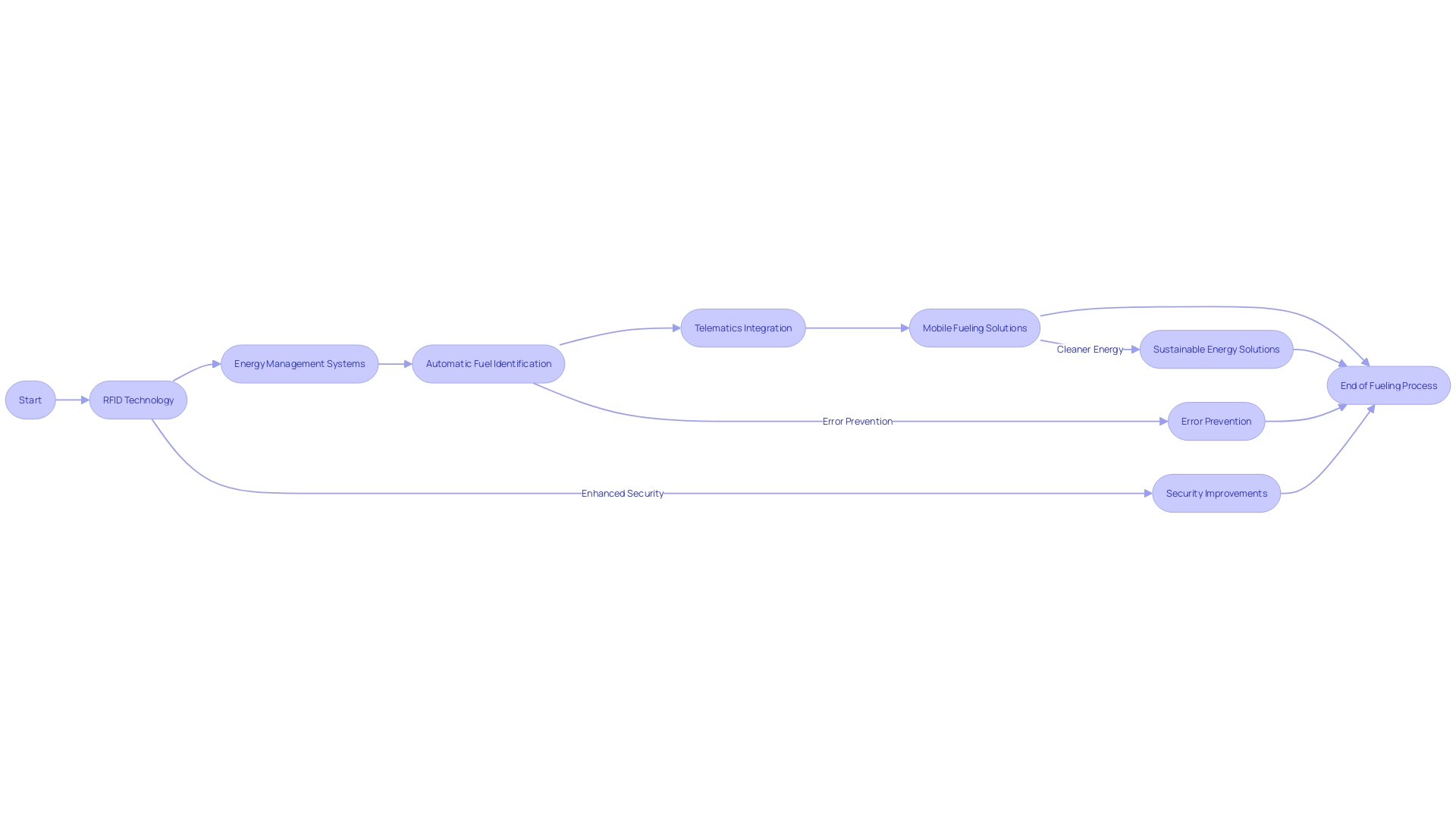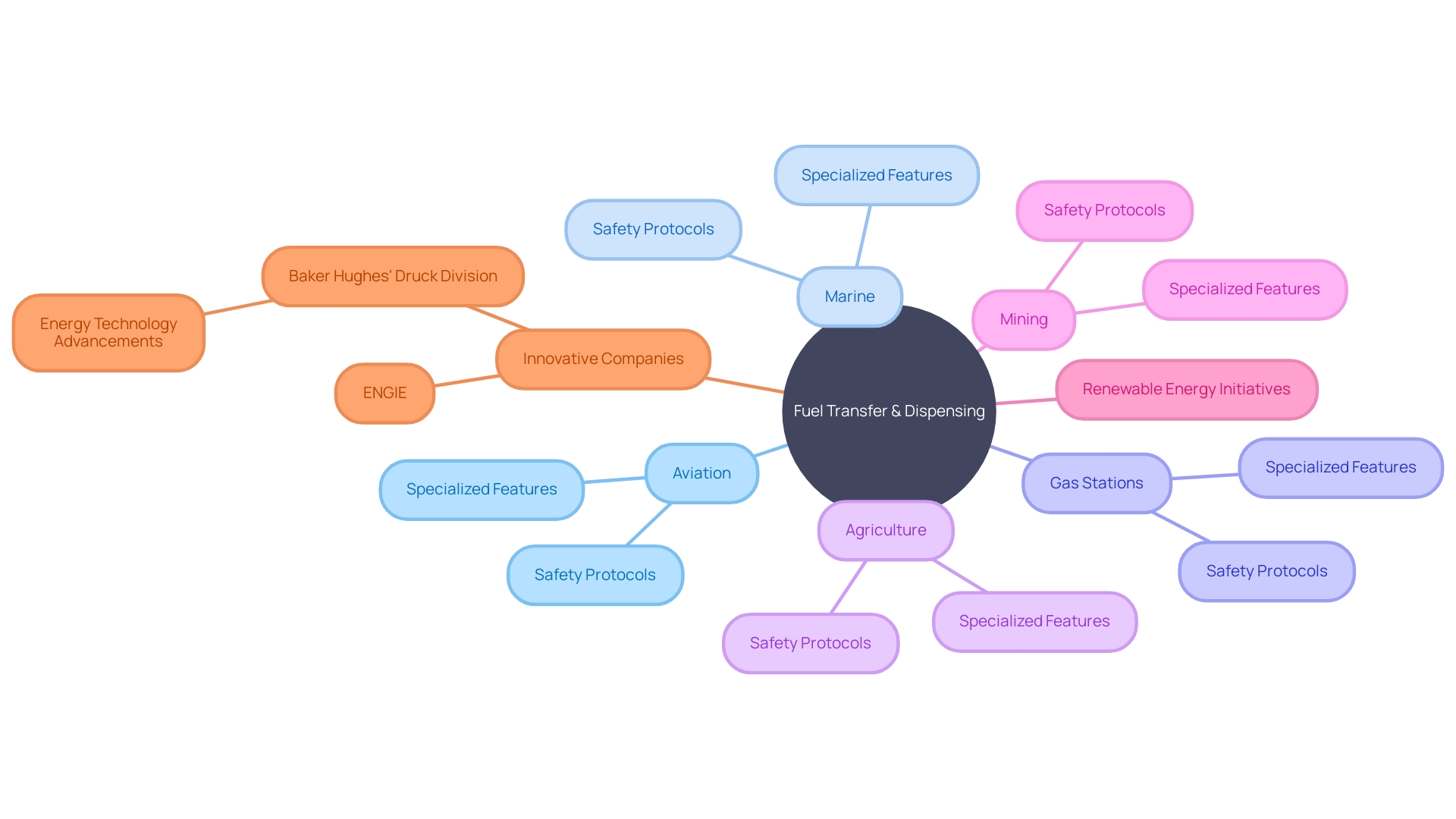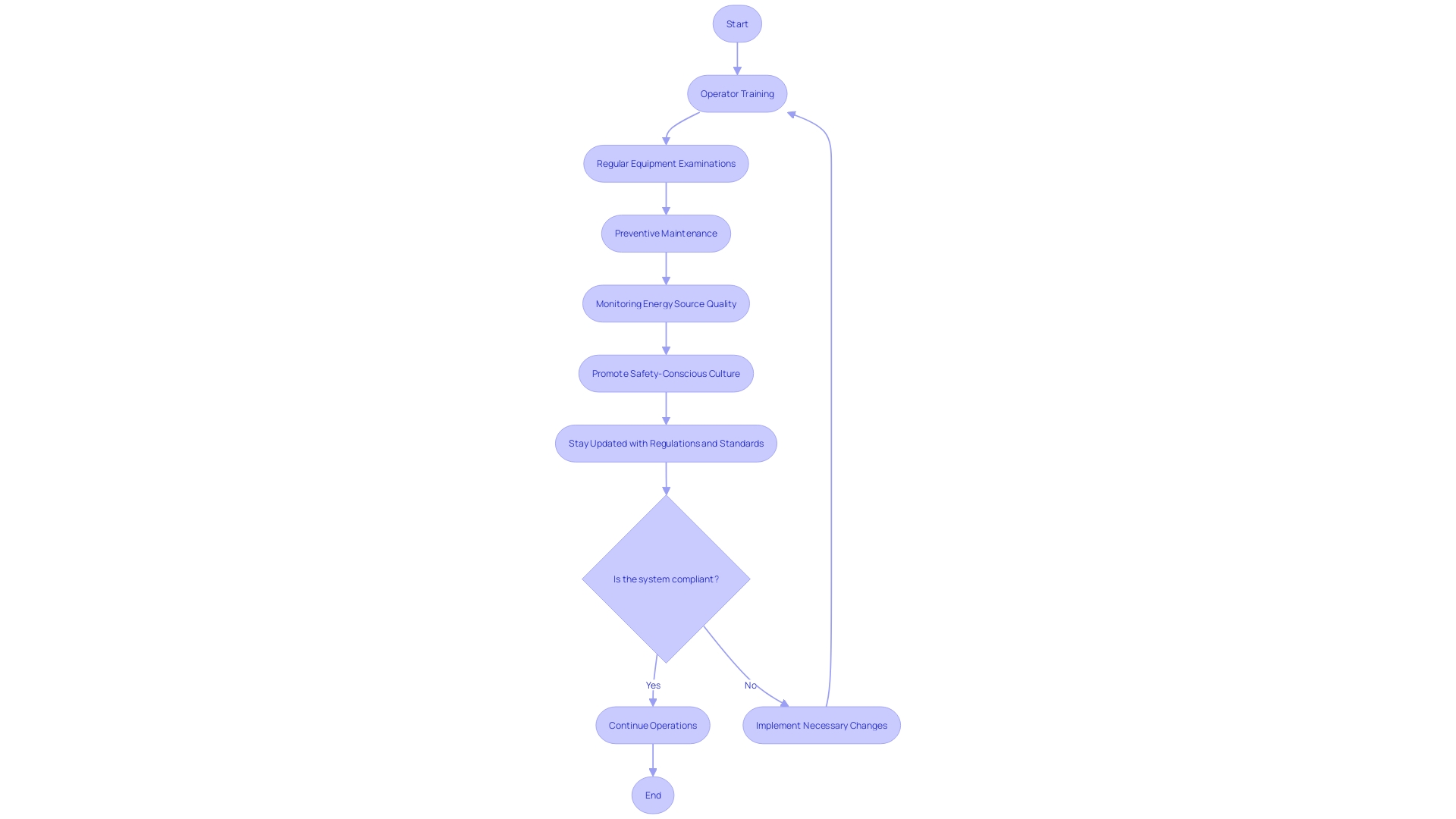Introduction
The landscape of fuel transfer technology is rapidly evolving to meet the diverse needs of modern applications, with fuel dispensing nozzles at the forefront of this advancement. These nozzles are more than mere conduits for fuel; they represent the integration of precision engineering with specialized features to enhance efficiency, safety, and environmental stewardship.
In this article, we will explore the different types of fuel dispensing nozzles, key factors to consider when selecting them, the benefits of regular maintenance, safety considerations in fuel filling, the importance of efficiency and reliability in fuel transfer, advanced technologies shaping fuel filling systems, industry-specific fuel nozzle solutions, and best practices for safe and efficient fuel transfer.
By delving into these topics, we aim to provide technical insights and analysis for an audience with a deep understanding of the renewable fuels industry. Join us as we uncover the intricacies of fuel dispensing nozzles and their role in shaping a safer, more efficient, and environmentally conscious fueling ecosystem.
Types of Fuel Dispensing Nozzles
The domain of fuel transfer technology is rapidly evolving to meet the diverse needs of modern applications, with dispensing apparatuses at the forefront of this advancement. These conduits are more than just channels for the transportation of substances; they symbolize the fusion of accurate craftsmanship with distinctive characteristics to improve effectiveness, protection, and ecological responsibility.
-
Automatic Shut-Off Dispensers: A pinnacle of safety and convenience, these dispensers epitomize smart fluid transfer. They are designed to automatically stop the flow of liquid once the receiving tank is full, effectively preventing overfills and the associated risks of spills and environmental contamination.
-
Manual Dispensers: The stalwart of dispensing, manual dispensers offer hands-on control over the fueling process. Their simplicity and reliability make them an enduring choice for small-scale operations where precision and the human element are valued.
-
High-Speed Dispensers: Time is a valuable commodity, and high-speed dispensers are the solution to the call for rapid refueling. They are specifically designed to minimize downtime by delivering energy source at an accelerated rate, a feature that is particularly beneficial for large vehicles and machinery that consume substantial amounts of energy.
-
Vapor Recovery Devices: As global consciousness shifts towards environmental conservation, vapor recovery devices serve a critical role in sustainable fueling practices. These devices capture vaporized fuel during the dispensing process, mitigating the release of harmful emissions into the atmosphere and contributing to a greener, cleaner planet.
Every type of sprayer is evidence of the industry's dedication to advancement, as observed in emerging uses like the hydrogen energy supply chain in Namie town, Fukushima Prefecture, where the objective is to establish a carbon-neutral society. Additionally, companies such as Parker are engineering solutions that have a positive impact on the world, evident in their contribution to motion and control technologies. This commitment is reflected in the emergence of electric forklifts, which utilize electricity from batteries to power motors, drive wheels, and operate hydraulic systems without the harmful exhaust associated with traditional fuel types.
To sum up, the assortment of fuel dispensing spouts accessible nowadays is a manifestation of the sector's commitment to tackling the intricate requirements of our changing world. Whether it is through automatic shut-off mechanisms, manual precision, high-speed delivery, or vapor recovery, these components are essential elements of a fueling ecosystem that emphasizes protection, efficiency, and environmental consciousness.
Key Factors in Selecting Fuel Nozzles
Fuel selection is a pivotal aspect of fueling operations, with several critical factors to consider ensuring optimal functionality and safety. The delivery device must provide the necessary amount of substance at an effective flow rate that corresponds to the operational requirements, avoiding problems like splashing or foaming. It is crucial that the spout is suitable for the particular gas type to avoid any possible rust or pollution.
Safety features are essential in fuel dispenser design; they should include automatic shut-off mechanisms to prevent overfilling, grounding devices to mitigate static electricity build-up, and splash guards to minimize spillage risks. The durability of the device is equally important, as it should be robust enough to endure the rigors of regular use in a variety of environmental conditions, thus ensuring a consistent performance with minimal maintenance interruptions.
Moreover, ergonomics play a significant role in nozzle selection. A user-friendly design that is easy to handle and comfortable to use can significantly enhance operational efficiency and reduce the likelihood of operator fatigue. This is especially crucial in high-volume fuel transfer scenarios where the frequency and duration of use are substantial.
These considerations are not only crucial for maintaining operational efficiency but also reflect the industry's movement toward sustainability and security. As emphasized by the case of catastrophic wildfire risks in California, the significance of adhering to stringent standards in energy-related operations cannot be overstated. The emphasis on cleaner energy sources, like hydrogen power cells, highlights the necessity for dispensers that can accommodate the specific demands of these emerging technologies.
In this environment, the knowledge and creative answers provided by organizations such as Parker and Baker Hughes, with their emphasis on engineering accuracy and technology that improves efficiency while ensuring safety, demonstrate the direction in which delivery technology is headed. These considerations are at the forefront of the industry's efforts to ensure the sustainability, security, and equity of energy access, as emphasized by SLB's initiatives to reduce emissions and transform energy for a net-zero future.

Benefits of Regular Fuel Nozzle Maintenance
Proper maintenance of dispensing equipment, including the device used to distribute fuel, is a fundamental aspect of operational excellence. It not only prevents leaks, which are a critical environmental concern, but also safeguards against disruptions in flow. Thorough attention to the cleanliness and functionality of the dispensing mechanism ensures that fuel is transferred efficiently, eliminating the occurrence of blockages that impede flow and affect the refueling process. Furthermore, regular upkeep procedures extend the lifespan of the equipment, resulting in substantial financial benefits by reducing the need for frequent replacements.
Fuel nozzles in peak condition are instrumental in avoiding equipment malfunctions that could pose risks to operators and the environment. Observing regular maintenance protocols also ensures adherence to the stringent regulatory standards set for the well-being and environmental protection. Drawing parallels from the automotive industry, as highlighted by master automotive technician Bogi Lateiner, neglecting routine maintenance can lead to hazards and expensive repairs. This principle is equally applicable to fuel transfer systems where the well-being of the machinery is of utmost importance.
In the broader context of technological advancements, companies like Parker and GE Aerospace demonstrate the value of innovation and the pursuit of excellence in engineering. These companies, leading in their respective areas, emphasize the significance of upholding machinery to the utmost standards to guarantee dependability, security, and adherence to constantly changing industry regulations. As we navigate the energy landscape, marked by a shift towards sustainable and efficient systems, the role of meticulous equipment maintenance becomes more pronounced, mirroring the commitment of industry leaders to a cleaner, smarter, and safer future.
Safety Considerations in Fuel Filling
Ensuring the security of transfer and dispensing operations is of utmost importance. To mitigate risks, operators must be thoroughly trained in procedures such as nozzle operation, emergency response, and adherence to safety protocols. Comprehensive grounding and bonding practices are critical to prevent static electricity from igniting fuel vapors. Moreover, proper ventilation is crucial to prevent the dangerous buildup of flammable vapors in fueling areas.
In case of possible fires, it is crucial to have fire extinguishers, emergency shutdown systems, and fire suppression devices readily available. The utilization of personal protective gear (PPE), including gloves, goggles for protection, and fire-resistant garments, is obligatory to shield against spills and other accidents. Furthermore, regular inspections of fuel filling equipment, such as nozzles, hoses, and storage tanks, are necessary to identify and address maintenance needs or hazards.
Recent incidents highlight the significance of these precautionary measures. An explosion and fire in Jackson, Mississippi, caused by a gas leak, resulted in fatalities and emphasized the consequences of inadequate protocols. Likewise, a tanker overturn in Massachusetts resulted in a significant spill of hazardous materials, demonstrating the hazards associated with the handling of dangerous goods and the requirement for strict emergency response protocols.
The Center for Transportation and the Environment focuses on the adoption of clean and efficient transportation technologies, which also requires strong practices for fuel handling. The International Air Transport Association's (IATA) 2023 Annual Safety Report, which reported no hull losses or fatal passenger jet accidents, serves as a testament to the efficacy of stringent safety protocols and continuous improvement in the aviation industry's approach to handling hazardous materials.
Efficiency and Reliability in Fuel Transfer
Fuel transfer and dispensing are critical operations that hinge on the efficiency and reliability of equipment such as pumps and nozzles. Incorporating automated systems can bolster both of these aspects by minimizing manual intervention, thus reducing errors and enhancing throughput. For example, Optimotion, led by CEO Guillermo Guereque, transformed the dispensing of energy for a water treatment chemical supplier by automating the process, which not only optimized operations but also provided crucial real-time data for compliance and auditing purposes.
Advanced flow control technology is another key area for enhancing dispensing of energy resources. By implementing state-of-the-art nozzles that precisely control the flow of petroleum, operations can prevent spills and ensure accurate measurement of the substance. This level of precision is crucial, as highlighted by AVL's partnership with Red Bull, where the focus on improving the gravimetric power density of their cell technology by a factor of three underscores the importance of innovation in the field.
Real-time monitoring systems serve as a vital tool for tracking energy levels and detecting leaks, which ensures timely identification and resolution of potential issues. As the Center for Transportation and the Environment (CTE) emphasizes clean and efficient transportation technologies, such monitoring solutions are aligned with their mission to reduce the environmental impact of transportation.
Preventive maintenance is a crucial approach for preserving the effectiveness and dependability of transfer machinery. Regular inspections, cleaning, and servicing of nozzles can prevent downtime and extend the lifespan of these critical components.
Lastly, continuous training and education of operators are imperative. Well-trained staff are crucial for the secure, effective, and correct functioning of transfer and distribution systems. The Center for Transportation and the Environment (CTE) and institutions like ASME highlight the ongoing need for professional development opportunities in the field, ensuring that operators are kept abreast of best practices and new technological advancements.
Advanced Technologies in Fuel Filling Systems
The domain of transferring and dispensing of energy resources is observing swift progress, driven by advancements that enhance effectiveness and safety. These are some leading-edge technologies shaping modern fuel infrastructure:
-
RFID Technology: By employing RFID for vehicle identification and tracking, the fueling process becomes more streamlined and secure. This system facilitates quick and precise transactions, reducing the potential for errors and enhancing throughput at fueling stations.
-
Energy Management Systems: An integrated approach, combining pumps, nozzles, and software, allows for meticulous monitoring of energy consumption. Such systems are pivotal in preventing unauthorized access, managing inventory, and ensuring economic operation of the fueling process.
-
Automatic Fuel Identification: To mitigate the risk of dispensing incorrect types of energy sources, automatic identification systems, leveraging sensors or RFID, are crucial. They maintain the cleanliness of the energy source by ensuring each vehicle gets the proper fuel, thus preventing expensive incidents of cross-contamination.
-
Telematics Integration: Incorporating telematics into fueling operations permits remote oversight and control. It provides real-time information on energy levels, usage patterns, and equipment condition, enabling proactive management and maintenance scheduling.
-
Mobile Fueling Solutions: For areas less accessible or for mobile fleets, trucks outfitted with dispensing apparatus provide a solution for on-the-spot refueling. This flexibility ensures that vehicles can receive energy whenever and wherever needed, without the constraints of fixed charging stations.
These innovations are part of a broader movement towards cleaner and more sustainable energy solutions, such as the hydrogen delivery systems trialed in Namie town, Fukushima Prefecture. These systems aim to establish a carbon-neutral society by utilizing hydrogen to generate electricity in homes, illustrating the potential for advancements in energy technologies to contribute significantly to environmental sustainability.

Industry-Specific Fuel Nozzle Solutions
Fuel transfer and dispensing equipment, including pumps and spouts, are pivotal in various industries, each with tailor-made features to address distinct operational demands. Aviation dispensers, for example, adhere to strict safety protocols and are equipped with advanced safety mechanisms necessary for aircraft refueling. In marine applications, the components are designed to withstand the corrosive maritime environment, ensuring reliable performance for vessels of all sizes.
At gas stations, retail dispensers are designed for customer convenience, integrating user-friendly features and often branded for recognition. In the agricultural industry, the spray heads accommodate the high volume of liquid required for farming machinery and are compatible with various types of energy sources. Mining injection devices, on the other hand, are sturdy enough to endure harsh conditions and are built with anti-static materials to avoid operational disruptions.
These specialized nozzles play a crucial role in supporting renewable energy initiatives, such as those demonstrated by the HyFlexPower project at a Smurfit Kappa paper mill in France, where green hydrogen is used to power turbines. Such advancements align with the objectives of companies like ENGIE and Baker Hughes' Druck division, which are at the forefront of energy technology, providing solutions aimed at a safer, cleaner, and more efficient energy landscape. Druck's pressure measurement technology, trusted in critical sectors like aerospace and mining, exemplifies the continuous innovation in the industry.
Statistics indicate a growing market for technologies like Vertical Axis Wind Turbines, emphasizing the importance of dependable energy transfer equipment in renewable energy sectors. As the demand for green solutions increases, companies aim to decrease their carbon footprint through efficient energy use, further propelling innovation in transfer technology.

Best Practices for Safe and Efficient Fuel Transfer
Efficient and safe energy transfer is vital for companies to maintain operational integrity and comply with industry standards. To achieve this, several practices are recommended. Firstly, operators should be well-trained in transfer procedures, protocols, and emergency responses. This aligns with insights from the energy industry that emphasize the importance of equipping employees with the skills to identify hazards and respond effectively to prevent accidents.
Regular examinations of filling equipment, like dispensers, tubes, and storage containers, are essential to detect possible problems or maintenance requirements. This preventative approach is supported by the aviation industry's focus on safety, where experts from Boeing highlight the significance of collaboration and continuous safety advancements in air transportation.
Preventive maintenance, including regular cleaning, calibration, and servicing of nozzles, should be part of a comprehensive maintenance schedule. This guarantees that the dispensing machinery functions dependably and complies with the strict regulations and standards of the energy sector.
Monitoring energy source quality is another critical step to ensure it meets required specifications. Contaminated or low-quality material can cause damage to machinery and affect performance. This is in line with the efforts by organizations like Virgin Atlantic, which are leading the way in using Sustainable Aviation Fuel (SAF) to reduce the environmental impact of aviation.
A safety-conscious culture among fuel transfer operators and staff is essential. It should highlight the significance of protocols for protection, personal protective gear, and the reporting of possible dangers. This reflects a broader industry move towards a culture of security and compliance, as noted in Boeing's commitment to transparency, accountability, and an unrelenting focus on product integrity.
Lastly, staying updated with relevant regulations and standards regarding energy transfer and dispensing equipment is imperative to ensure compliance and mitigate risks. This is particularly relevant given the International Air Transport Association's (IATA) report on global aviation safety in 2023, which showed "best-ever" results, underscoring the importance of regulatory compliance in achieving high safety standards.
By implementing these best practices, companies can foster a robust safety culture, maintain high operational standards, and contribute to the overall safety and efficiency of the fuel transfer industry.

Conclusion
In conclusion, fuel dispensing nozzles are evolving rapidly to meet modern needs. They integrate precision engineering with specialized features for efficiency, safety, and environmental stewardship. Different types of nozzles, such as automatic shut-off, manual, high-speed, and vapor recovery, prioritize safety, efficiency, and environmental consciousness.
When selecting fuel nozzles, consider flow rate, fuel compatibility, safety features, durability, and ergonomic design. Regular maintenance is crucial for preventing leaks, ensuring optimal flow, and complying with regulations.
Safety considerations include operator training, grounding practices, ventilation, fire safety, and regular inspections. Efficiency and reliability in fuel transfer can be enhanced through automated systems, advanced flow control technology, real-time monitoring, preventive maintenance, and operator training.
Advanced technologies like RFID, fuel management systems, automatic fuel identification, telematics integration, and mobile fueling solutions streamline operations and contribute to cleaner and sustainable fuel solutions.
Different industries require industry-specific fuel nozzle solutions. Specialized nozzles support diverse applications and renewable energy initiatives.
To achieve safe and efficient fuel transfer, follow best practices such as operator training, regular inspections, preventive maintenance, fuel quality monitoring, fostering a safety-conscious culture, and staying updated with regulations.
By considering these insights and adopting best practices, companies can shape a safer, efficient, and environmentally conscious fueling ecosystem. The commitment to innovation, sustainability, and safety in the renewable fuels industry is evident through advancements in fuel nozzle technology and industry leaders' efforts in driving a cleaner, smarter, and safer future.




